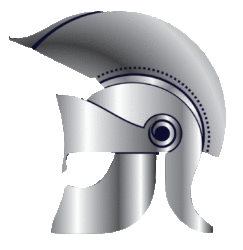
These are the lowest points the exchange rate has been at in the last 30 and 90-day periods. These are the highest points the exchange rate has been at in the last 30 and 90-day periods. SG&A expenses as a percent of revenue are generally high for healthcare and telecommunications businesses but relatively low for real estate and energy. Our tax professionals will strategize with you and put a plan together to properly file & submit all necessary paperwork to the IRS on your behalf.
- Examples of direct selling expenses include transaction costs and commissions paid on a sale.
- Singapore is a major international transport hub in Asia, serving some of the busiest sea and air trade routes.
- SG&A expenses as a percent of revenue are generally high for healthcare and telecommunications businesses but relatively low for real estate and energy.
- A company must incur many different types of costs to run a business, and many of those expenses are not directly tied to making specific products.
- SG&A costs are typically reduced after a company merger or acquisition makes it possible to reduce redundancies.
- On the other hand, advertising expenses will vary with the strategic decisions a company makes during the given period.
As part of its Q financial reporting, Apple reported $12.809 billion of operating expenses for the quarter. Of this, $6.797 billion was research and development, while $6.012 billion was selling, general, and administrative. Although the company does state that increases to SG&A from prior periods relates to headcount, advertising, and professional sg&a meaning services, there is little more transparency beyond these notes. They are incurred in the day-to-day operations of a business and may not be directly tied to any specific function or department within the company. They are usually fixed costs that are incurred, disregarding the amount of sales or production incurred during a certain period.
SG&A
SG&A includes almost every business expense that isn’t included in the cost of goods sold (COGS). COGS includes the expenses necessary to manufacture a product including the labor, materials, and overhead expenses. SG&A costs are the residual expenses necessary to run the organization and incur costs less specifically tied to the cost of making the product.
Singapore is also a member of the United Nations, the World Trade Organization, the East Asia Summit, the Non-Aligned Movement, and the Commonwealth of Nations. SG&A includes costs related to selling, general, and administrative expenses. These fall into a specific category of operating expenses, and may not include all those involved in your operating budget or cost of goods sold.
General and Administrative Expenses (G&A) in SG&A
G&A expenses are the overhead costs of a business, many of which are fixed or semi-fixed. These costs don’t relate directly to selling products or services but rather to the general ongoing operation of the business. The selling component of this expense line is related to the direct and indirect costs of generating revenue (from selling products or services). SG&A includes all non-production expenses incurred by a company in any given period.
- Reported separately from COGS, these expenses are deducted from gross margin to determine a company’s net income.
- General and administrative costs are rarely reported separately; it’s fairly common to see these two costs reported together.
- When these expenses are deducted from the gross margin, the result is operating profit.
- In order to determine how well you’re managing your budget and your overall expenses, you may want to take a look at your SG&A sales ratio.
Both encompass the expenses necessary to operate a business independent of the costs to manufacture goods. The president is directly elected by popular vote for a renewable six-year term. Companies may aggregate all of these expenses in a single SG&A line, or it may segregate selling costs from general and administrative costs.

